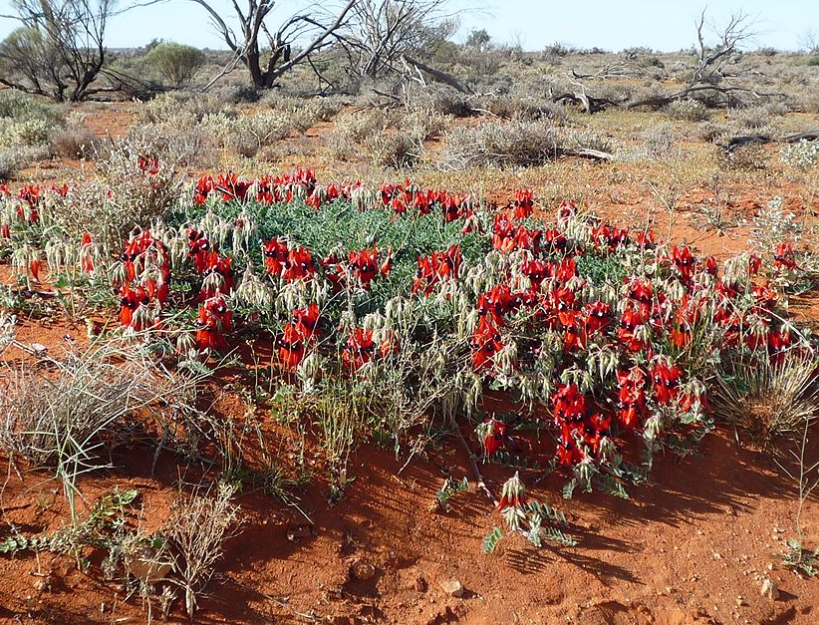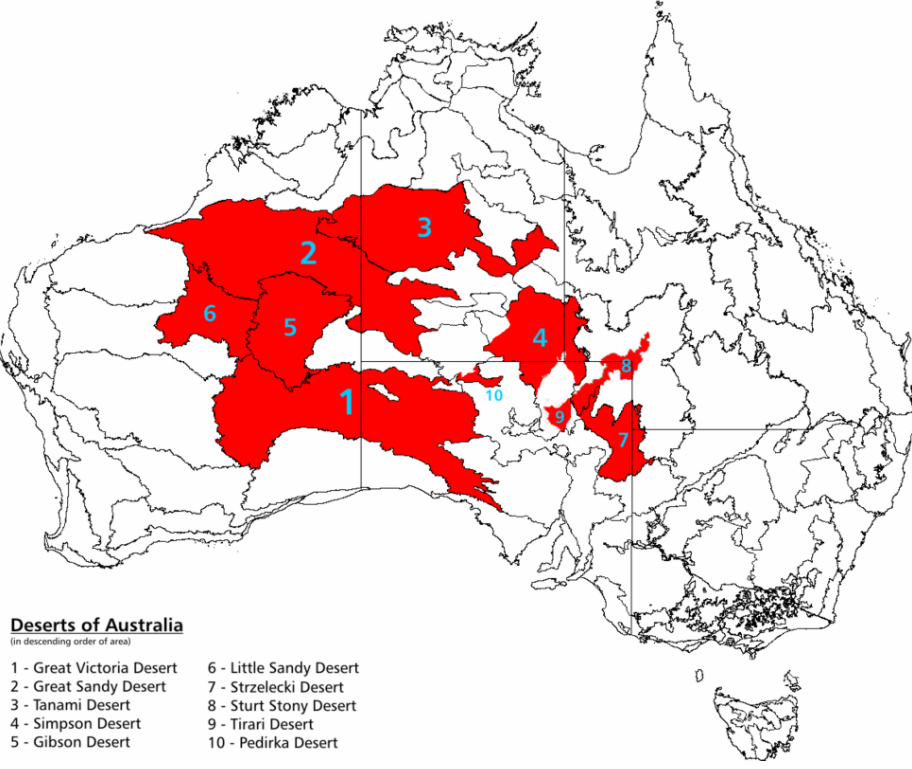GEOGRAPHIC EXTREMES SOCIETY
AUSTRALIAN RECORDS
Deserts
The Oxford dictionary defines deserts as waterless tracts of land with little or no vegetation and typically covered with sand. This definition also extends to polar deserts which often get ranked as the largest in the world.
Of the many types of deserts, Australia has a variety, from ones with mobile sand dunes, rocky or gibber deserts and the predominate flat, mulga dominated deserts with fixed sand dunes. The deserts of Australia occupy an impressive 18% of the continental landmass of Australia. This total would rise to 30% if desert classification extended to Western Australia’s arid plateaus and regions elsewhere which receive the same rainfall as the nine major deserts.
The Sahara Desert is, without doubt, the world’s most extensive non-polar desert. The Sahara is immense; indeed, it is still growing, and no Australian desert rivals it in size. For comparison’s sake, if we were to combine all of Australia’s recognised deserts, they would still only be a third of the size of the Sahara.
Largest Deserts
Although the size varies from publication to publication, the largest of the Australian deserts is the Great Victoria Desert, which straddles the border of Western Australia and South Australia. The Great Victoria Desert Bioregion as defined by the Australian Department of Environment at 418, 750 km2. To the north, the Great Sandy Desert is Australia’s second-largest at 395, 250km2, extending from the coast of Western Australia at Eighty Mile Beach through into the Northern Territory.

Great Victoria Desert. Image supplied by Friends of Great Victoria Desert

Australian Desert Bioregions. Image supplied by Aust. Dept of Sustainability, Environment, Water, Population and Communities
Smallest Desert
Australia’s smallest Desert is the Pedirka Desert, 100 kilometres northwest of Oodnadatta. It consists of parallel dunefields, with gently undulating plains surrounded by stony tablelands. The Pedirka desert is situated on the western boundary of South Australia’s Witjara National Park and follows the Finke River as it disappears below the sand into ancient paleo-river channels. Even smaller deserts have been named across Australia, including in surprising places like Victoria and Cape York, but so far these are incorporated into existing biological communities.
Youngest Desert
Incredibly, the oldest dunes in the Simpson Desert appear to be only 20,000 to 30,000 years old, dating back to the most recent ice age. Why the Simpson Desert formed only in the last ice age is uncertain.
GES Record: Largest non-polar Desert in the World – Sahara Desert. 9,200,000 km2 (Source: Wikipedia)
GES Record: Largest Australian Desert – Great Victoria Desert. 418,750km2 (Source: Australian Dept of Environment)
GES Record: Smallest Desert in Australia – Pedirka Desert – 1,250km2 (Source: 10 Deserts Project)
The Geographic Extremes Society welcomes any input as to the veracity of these records and we encourage everyone to contribute to these extreme records by contacting us to initiate the discussion
